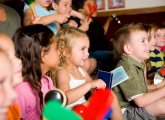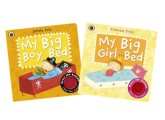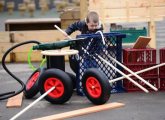Supporting early learning doesn't have to be expensive, says Catherine Clark...
I’ve found over the years that sometimes the simplest and most inexpensive resources provide the best learning opportunities. I, like many early years practitioners, am a natural collector. I see the potential in some disregarded item that others may see as junk – I’ve made some of my best finds at scrap stores, boot sales and outside.
I like to have lots of different size drawers, pots, treasure chests and baskets brimming full of interesting and diverse items. Independent access to these bits and pieces is crucial. The children need to know which are consumable and which are to be returned. Little scoops, ladles and even tweezers help children understand how many of each item they can utilise.
I always had a great mass of buttons kept in a metal tin. The children loved rummaging their hands through the clattering contents. Sieving to sort and match buttons can help with sequencing and creative activities. I also advocate a collection of stones and shells in diverse sizes, shapes and textures. The pebbles can become magic stones, small world scenery and mathematical objects. I have an abiding memory of a four-year-old child holding a shell and saying that it was “the colour of warm, milky coffee”. Such a simple item can evoke such rich language.
Feathers and moss can be used to create small world scenes and can evolve into fabulous stories. Dried leaves and the silvery cases from Honesty leaves can be used for creative work.
Having an abundance of such treasures provides a wealth of sensory, open-ended learning opportunities. There can be a richness of contents even if there is a lack of riches in the budget.
Catherine Clark has worked in early years education for many years. She is the in-house educationalist at TTS, consulting and advising on how children learn, and has developed numerous award-winning products.

Capture Education
Nursery Management

Ladybird’s Pirate Pete and Princess Polly books
Ace-Practitioner

The Outdoor Curriculum in all its Glory by Early Excellence
Ace-Practitioner
